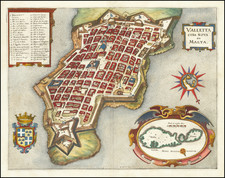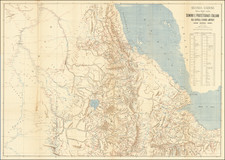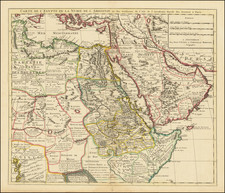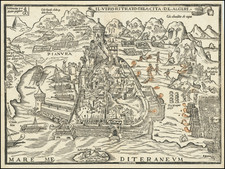Waldsemuller's 1513 Ptolemaic Map of Northern Africa, Sicily and Sardinia
antique map by Martin Waldseemuller, showing the ancient, Ptolemaic image of part of the Coast of North Africa and contiguous islands of Malta, Sicily and Sardinia.
This map was published in Strasbourg in 1513. The map extends from Numidia Nova (Algeria) to Syrtis Magna (Western Libya).
1513 Strasbourg edition of Ptolemy’s Geographia
This map appeared in Waldseemüller’s 1513 edition of Ptolemy’s influential Geographia, printed by Waldsemüller’s friend and collaborator Johann Schott. It is likely that Waldseemüller, along with the scholar Matthias Ringmann, started working on the project as early as 1505, but the death of their patron, René II, in 1508 resulted in the closure of their press at St. Dié. Additionally, Ringmann died in 1511. Schott and Waldseemüller finally finished the project in 1513, publishing it with Schott in Strasbourg.
The 1513 edition marked an important shift in the history of cartography because it was the first printing of Ptolemy to incorporate tabulae novellae, or modern maps, in addition to the ancient, Ptolemaic version of geography. The 27 original Ptolemaic maps were accompanied by 20 modern maps, of which this is one. All of its maps were printed from beautifully carved woodblocks made of pear wood. This edition of the Geographia was also the first to be organized so as to separate the ancient from the modern maps, to show how knowledge had changed since Ptolemy’s time fourteen centuries earlier.
This map shows a region important to European commerce at a time when Europeans were beginning to know more about the region. It is a mixture of ancient and modern scholarship and was part of the hugely influential 1513 Strasbourg edition of Ptolemy. Waldsemuller was one of the most important cartographers of the fifteenth century and this map is a vital addition to any collector of Africa, Ptolemy, or Waldseemüller.
Martin Waldseemüller (c. 1475-1520) was a sixteenth-century cosmographer best known for his 1507 world map in twelve sheets, the earliest surviving map to include the name “America.” He was an influential mapmaker during his time whose work affected many of his contemporaries and successors. Waldseemüller was born near Freiburg, in what is now southwestern Germany. His family moved to Freiburg proper when he was young and he attended university in the city beginning in 1490.
Waldseemüller gathered information about the New World discoveries and geography from St.-Dié des Vosges in Lorraine, where he was a professor of cosmography under the patronage of René II, Duke of Lorraine. He was a member of an intellectual circle who produced work from the St.-Dié Press. However, the press failed when the Duke died, and Waldseemüller moved to Strasbourg.
He is best known for the 1507 map and another world projection, the Carta Marina published in 1516. He also published an edition of Ptolemy in 1513, in collaboration with Johann Schott, a friend from Freiburg and St.-Dié. Besides his innovative use of the toponym “America”, Waldseemüller was the first to create such a large printed world map, the author of the earliest known printed globe gores, the first to create a published collection of modern maps, and one of the first to create maps from ground measurements. He was knowledgeable in surveying methods and designed a quadrant and other instruments. He returned to St.-Dié late in life as canon, although he continued to return to Strasbourg for work and for carnival. He died in St.-Dié in 1520.
Waldseemuller is generally credited with having named the continent of America, based upon the then current belief that Amerigo Vespucci had been the first modern explorer to reach the continent of America in 1497, during the first of four expeditions to America which were then credited to Vespucci between 1497 and 1504. The report which described the 1497 expedition is now generally believed to be a forgery. Later in his career, Waldseemüller elected not to use the toponym for the continents, preferring to leave them unnamed. However, the name had been taken up by his contemporaries, in large part due to the influential nature of Waldseemüller’s earlier works.













![Questo e Il vero disegno de Tunis con gran parte de lafrica tratto da un disegno fatto al tempo che Il Serenissimo Imperator Carlo V lo prese lan[n]o 1535 co[n] le distancie delle terre piu Jmportante.](https://storage.googleapis.com/raremaps/img/small/61570sb.jpg)
![[Malta] De Melita insula. Melita insula, ab Sicilia disiuneta Africam versus s hierosolimitanor[um] militum sedes](https://storage.googleapis.com/raremaps/img/small/73753.jpg)